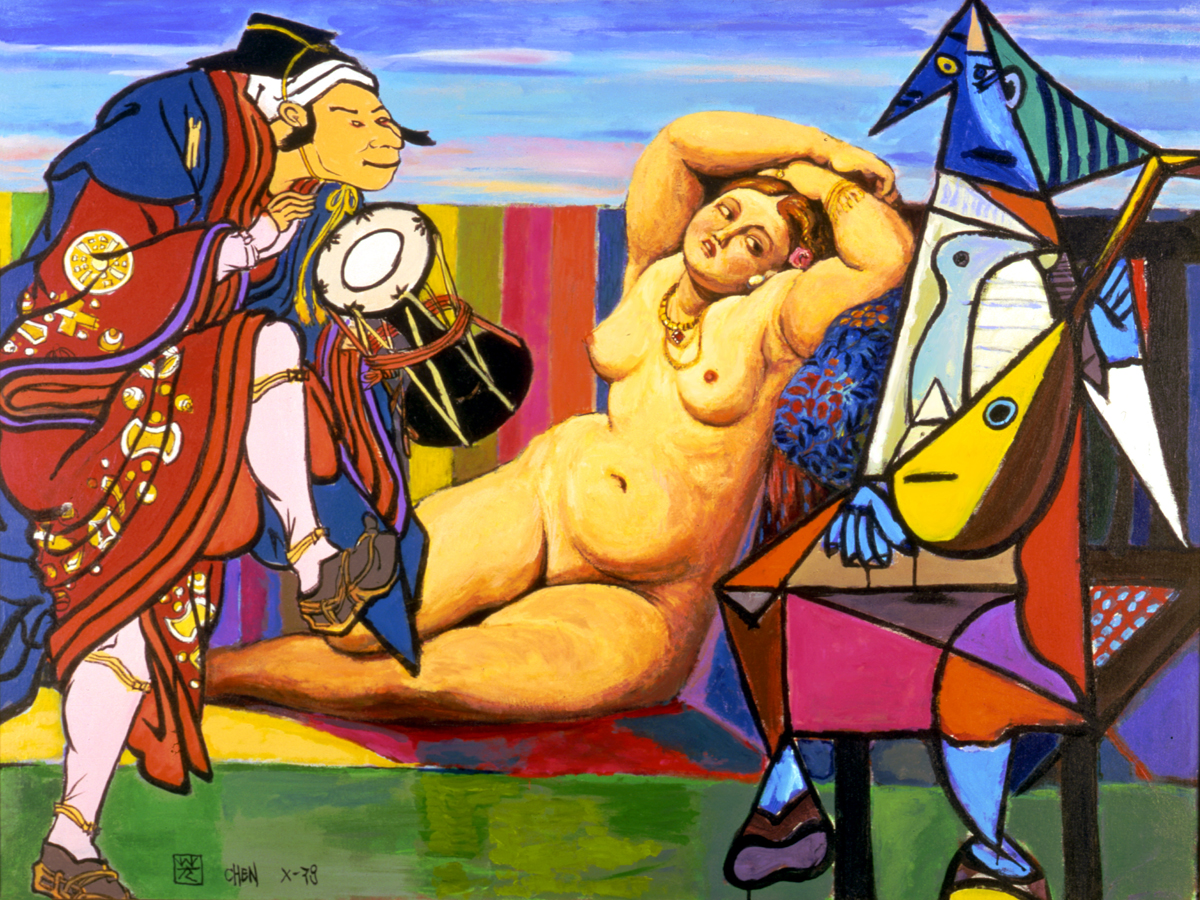
East and West 3#77002 183 X 127 cm ac
The “Poet Fairy,” Li Po (701-762) and his friend “The Poet Sage,” Tu-fu (712-70) were China’s greatest poets. Li Po led a wandering life as a hermit, knight-errant, and political dabbler. His poetry has the soul of music. It weaves a magical fairyland full of romantic abandon and a transformed world.He is frequently thought of as the poet of the moon, a subject he frequently treated. Every Chinese person can recite Li Po moon poetry, and there is a moon (harvest) festival every fall in Taiwan and mainland China. In Asian thought, the moon is thought of as a spiritual and sentimental image. Consider this Li Po verse: From a pot of wine among the flowers translated by Witter BynnerThe Li Po icon by Liang Kai was executed in Tchan (Zen) technique which evokes by means of a linear composition an image which is more music than descriptive, Chen’s painting is an equally pure and uncomplicated manifestation of the meeting of East and West.
by Lawrance Jeppson |

Competition
2015 年 7 月 30 日

